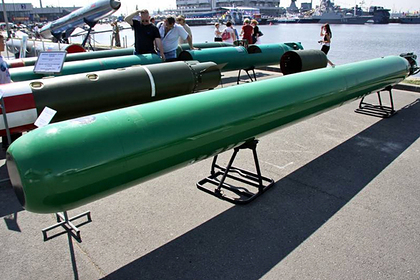
Torpedo “Case”
Russia could begin to arm itself with TE-2 remote-controlled electric homing torpedoes, writes The Drive, commenting on the January interview to the Military-Industrial Courier, General Director of the Tactical Missile Armament Corporation (KTRV) Boris Obnosov.
“Although Obnosov did not disclose any additional information about the new torpedo, except for the type of its power plant, it is quite possible that he was referring to the TE-2,” the American publication suggests.
The publication reminds that this weapon, designed to destroy enemy submarines, is launched from standard 21-inch (533-mm) torpedo tubes, has a mass of about 5400 pounds (2450 kilograms), including a 550-pound (250-kilogram) high-explosive fragmentation warhead, and a length of 27 feet (8300 millimeters). The maximum torpedo range, notes The Drive, is 15.5 nautical miles (over 28 kilometers), and the maximum speed is 45 knots (over 83 kilometers per hour).
According to the publication, in addition to the TE-2, Obnosov could mean the universal electric torpedo UET-1, which was created to replace the Soviet universal self-guided electric torpedo UZET-80. The Drive notes that, according to open data, the characteristics of UET-1 are superior to TE-2.
The publication, recalling what happened in August 2000 with the Russian nuclear submarine (nuclear submarine) K-141 “Kursk” of project 949A “Antey”, notes that, in general, electric torpedoes are more progressive, more reliable and safer than chemical ones.
In January, in an interview with the Military-Industrial Courier, Obnosov spoke about the Grom-E guided missile and bomb armament system, created on the basis of the Kh-38ME modular multipurpose guided missile, equipped with various homing heads (GOS).
In February 2020, the general director of KTRV announced the completion of state tests of a promising torpedo. At the same time, military expert Maxim Klimov admitted that Obnosov meant UET-1E, created as part of the Ichthyosaurus development work. In the opinion of the military observer Viktor Litovkin, it was a thermal torpedo “Case”.

